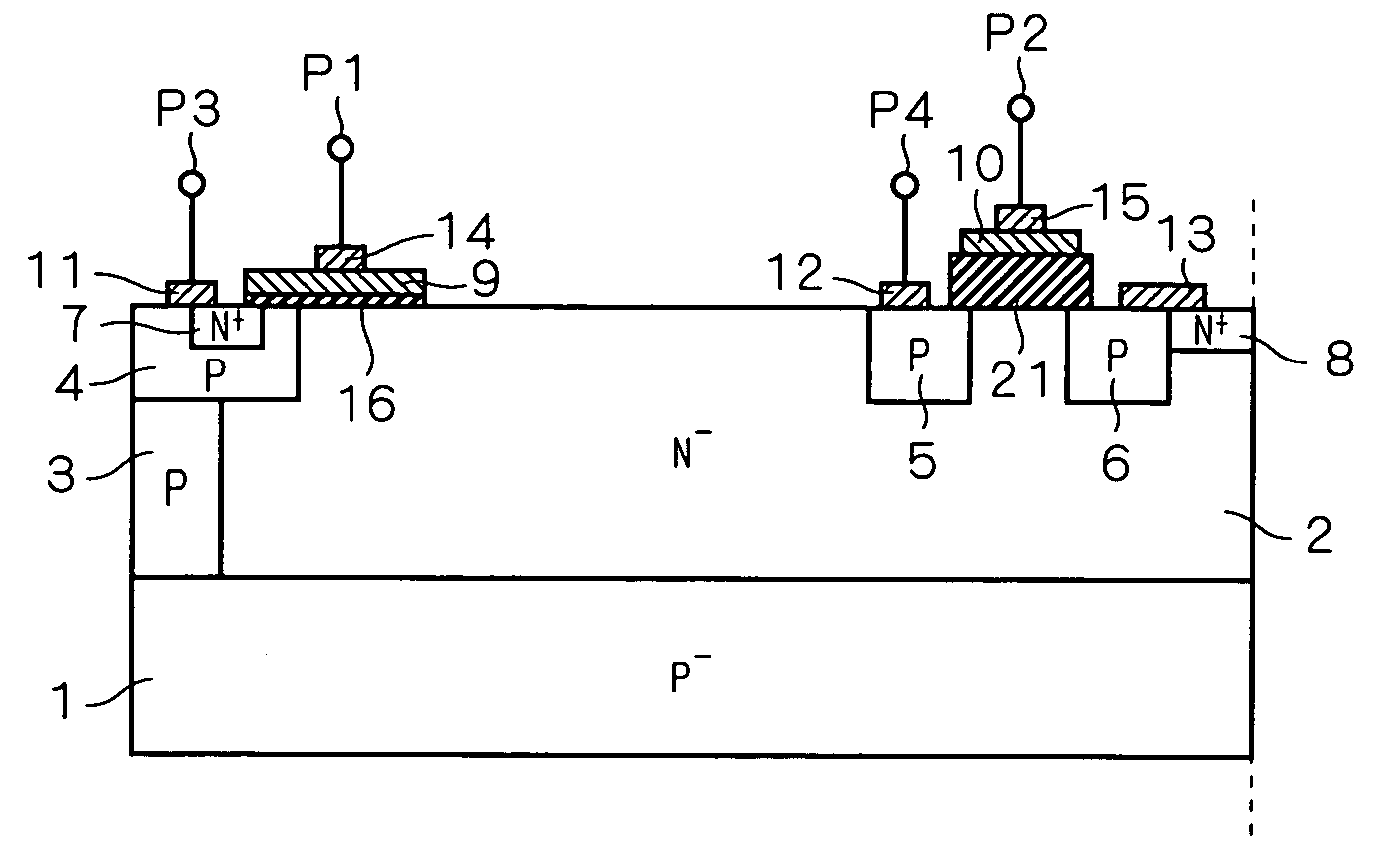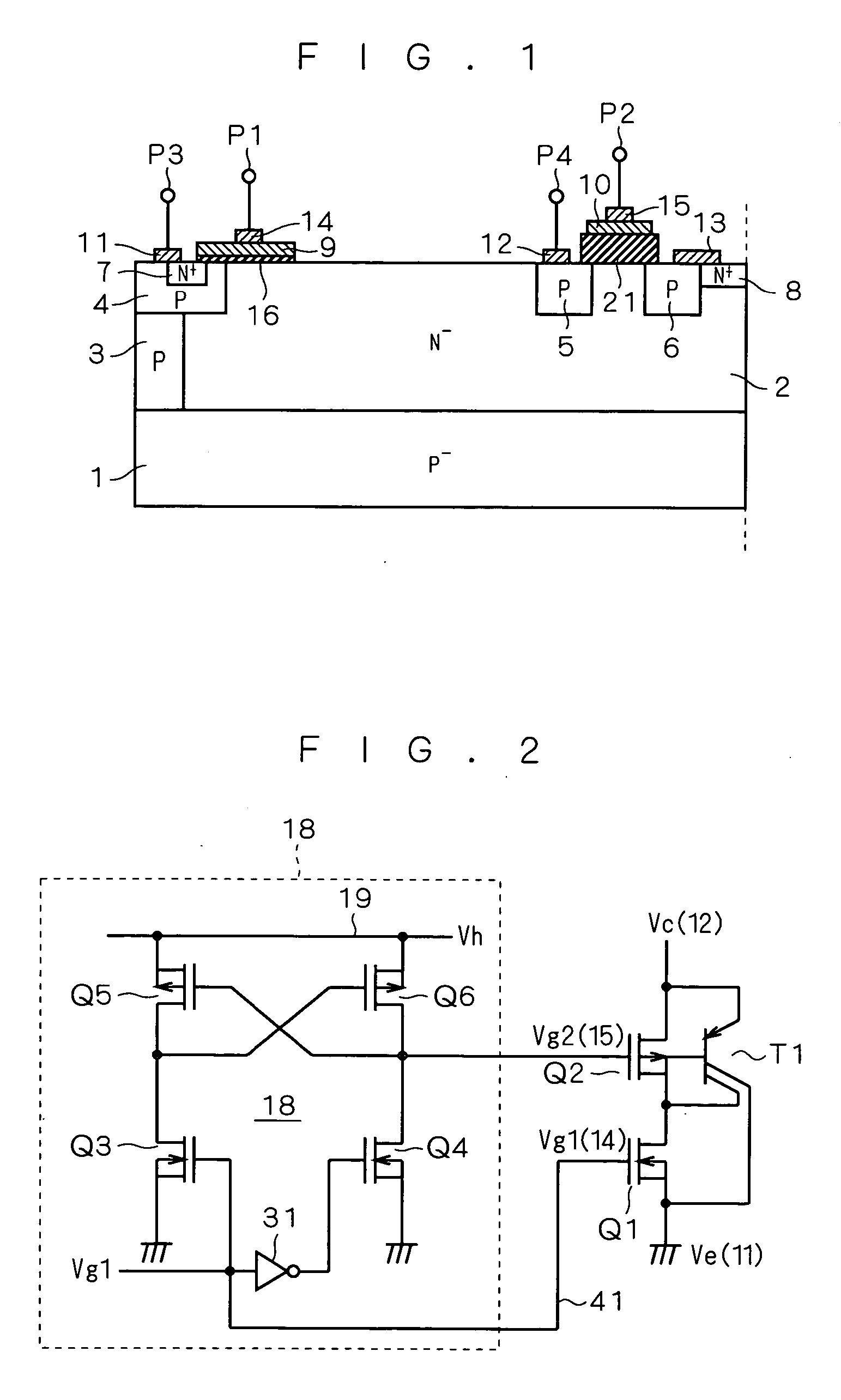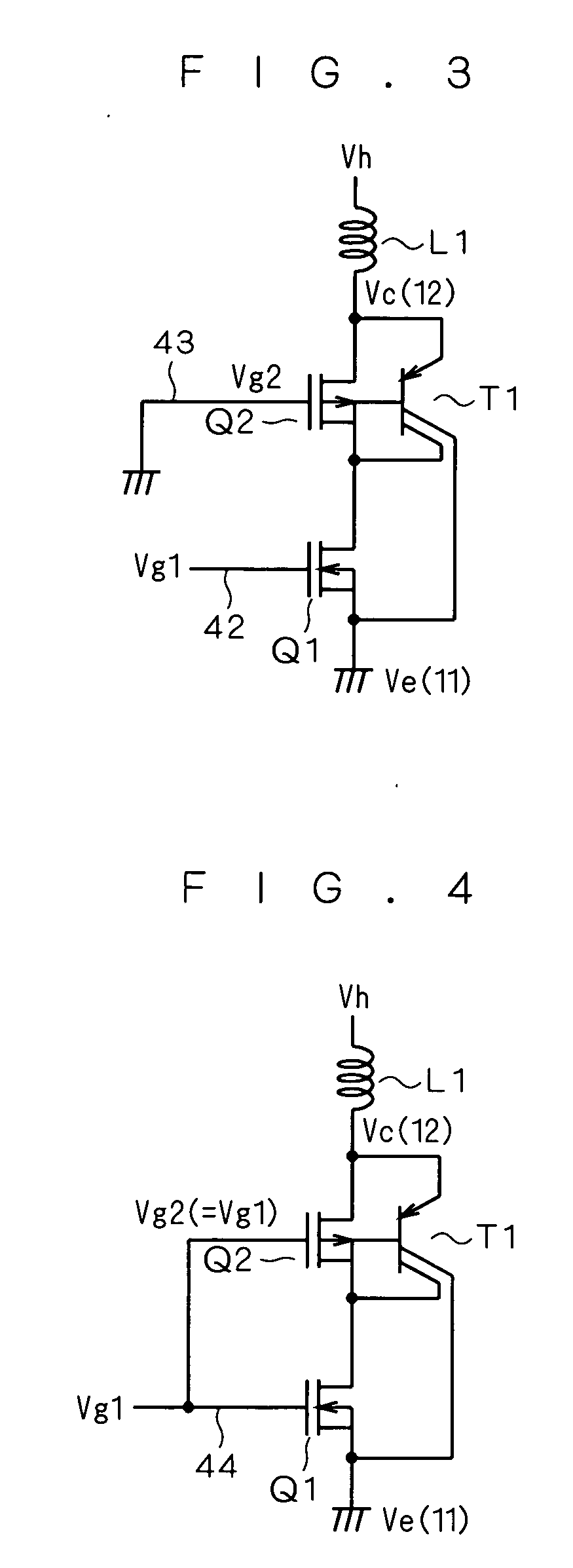Semiconductor device and driving circuit for semiconductor device
a driving circuit and semiconductor technology, applied in semiconductor devices, electronic switching, pulse techniques, etc., can solve the problems of low resistance effective and low switching loss, and achieve the effects of low resistance effective, low switching loss, and easy control and reliable operation
- Summary
- Abstract
- Description
- Claims
- Application Information
AI Technical Summary
Benefits of technology
Problems solved by technology
Method used
Image
Examples
first preferred embodiment
[0052]FIG. 1 is a cross-sectional view showing a semiconductor device structure having an IGBT according to a first preferred embodiment of this invention. As shown in FIG. 1, a PMOS transistor Q2 includes P diffusion regions 5 and 6, and a conductive film 10 and a second gate electrode 15 formed via a gate oxide film 21 on a surface of an N− epitaxial layer 2 between the P diffusion regions 5 and 6.
[0053] The gate oxide film 21 is formed in a thickness having a gate breakdown voltage higher than the element breakdown voltage of the IGBT, like a typical field oxide film and the like. Namely, the thickness of the gate oxide film 21 is so set as to satisfy a prescribed breakdown voltage higher than the element breakdown voltage of the IGBT. Accordingly, the PMOS transistor Q2 works without a hitch when the gate electrode thereof is driven with a potential difference of the same level as that generated between an emitter electrode 11 and a collector electrode 12 during the IGBT operat...
second preferred embodiment
[0067]FIG. 3 is a circuit diagram showing a driving circuit for a semiconductor device according to a second preferred embodiment of this invention. As shown in FIG. 3, a coil L1 is added to the semiconductor device (PNP bipolar transistor T1, NMOS transistor Q1 and PMOS transistor Q2) according to the first preferred embodiment.
[0068] The first gate voltage Vg1 is applied to the gate of the NMOS transistor Q1 via a signal line 42 which is control signal supply means, and the ground level is applied as the second gate voltage Vg2 to the gate of the PMOS transistor Q2 via a signal line 43 which is fixed potential supply means. The coil L1 has one end applied with the constant voltage Vh and the other end connected to the emitter of the PNP bipolar transistor T1 and the source of the PMOS transistor Q2. The coil L1 has the inductance of 100 mH, for example.
[0069] In FIG. 3, the first gate voltage Vg1 is applied to the first gate terminal P1 (see FIG. 1), the second gate voltage Vg2 ...
third preferred embodiment
[0074] Because turn-ON / OFF of the PMOS transistor Q2 is basically determined by a potential difference between the threshold voltage Vth of the PMOS transistor Q2 and the collector voltage Vc, it is conceivable that the threshold voltage Vth of the PMOS transistor Q2 should be optimized, or instead of optimization of the threshold voltage Vth, the second gate voltage Vg2 should be made variable voltage to be adjusted during turn-ON / OFF of the IGBT rather than fixed voltage as in the second preferred embodiment. A third preferred embodiment realizes a relatively simple circuit structure by making the second gate voltage Vg2 variable voltage.
[0075]FIG. 4 is a circuit diagram showing a driving circuit for a semiconductor device according to the third preferred embodiment of this invention. As shown in FIG. 4, the coil L1 is added to the semiconductor device according to the first preferred embodiment, as in the second preferred embodiment.
[0076] As shown in FIG. 4, the first gate vol...
PUM
 Login to View More
Login to View More Abstract
Description
Claims
Application Information
 Login to View More
Login to View More - R&D
- Intellectual Property
- Life Sciences
- Materials
- Tech Scout
- Unparalleled Data Quality
- Higher Quality Content
- 60% Fewer Hallucinations
Browse by: Latest US Patents, China's latest patents, Technical Efficacy Thesaurus, Application Domain, Technology Topic, Popular Technical Reports.
© 2025 PatSnap. All rights reserved.Legal|Privacy policy|Modern Slavery Act Transparency Statement|Sitemap|About US| Contact US: help@patsnap.com



